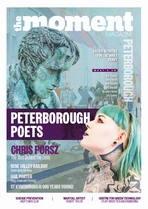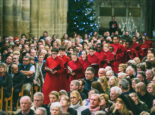Art on the Streets
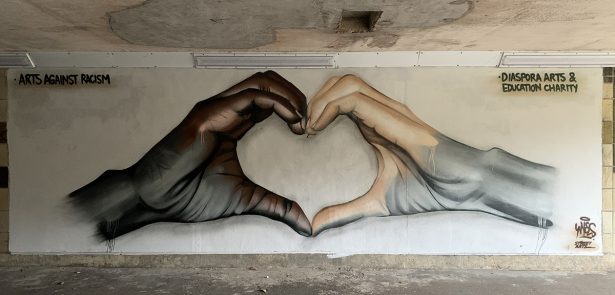
In 2020, an image painted in a Peterborough underpass went global on social media, being adopted by Black Lives Matter protesters. The artist was Nathan ‘Nyces’ Murdoch. Peterborough born and bred, Nathan began as a graffiti artist, getting into scrapes with the police. Now, he runs his own highly successful business in the city, Street Arts Hire, and has become a key figure in Peterborough’s cultural scene. Moment editor Toby Venables talked to him.
How did you get started in art – and street art and graffiti in particular?
I started drawing when I was at school. I’m 36 now, and I would have been about 12 or 13 when
I started getting into the graffiti side of things. The internet was not very well developed. We didn’t have PCs at home – I knew probably one person who did – so the only time I could access the internet was at school. We used to log in at school and look at graffiti websites – there were probably only three or four on the whole internet back then. Then around 1999 I started actually using spray paint. As the years evolved, I got into trouble. The first time was in 2001, when I got arrested for painting an underpass near a railway. And then I got arrested again in 2004, for painting graffiti in the street. I had just turned 18 and so went to Magistrates Court, whereas the time before I got a conditional discharge. I grew up in Eastfield in Peterborough, which for a young person wasn’t the easiest place to grow up, and some of the people I associated with chose the wrong path and ended up getting into robbery and stealing cars. But I stuck with graffiti.
So, I’m still breaking the law at that point, but I’m focusing it in a creative way – which kind of makes it acceptable! I just never stopped painting, so now I have 23 years of doing graffiti, and the world has evolved.
What’s the relationship between graffiti and street art?
I often tell people that street art and graffiti are two completely different cultures. Graffiti, generally, is a letter-based format. There’s a lot of culture that’s involved in it – sort of the vandalism side. A lot of graffiti purists still believe in the anti-government, anti- system thing, and it’s very much a rebellion. Street art is very different – and I’m going to say that Banksy essentially created street art. Or perhaps I should say his popularity made it what it is today, because strictly speaking he wasn’t originally a street artist. So then the culture started to change, and there was a split, but they’re still related. If graffiti is the culture, street art is a subculture to graffiti; without graffiti, street art wouldn’t exist. Street art is also the more refined side to graffiti. Graffiti is quite an aggressive culture. Though perhaps not so much now, it used to be quite male dominated, full of ego, aggressive, very masculine. Street art is much more refined, and open to everybody. So there’s two completely different cultures. Some of the more purist graffiti people hate street art with a passion and don’t support the path I have chosen. I guess where I’m at now is more of a hybrid. I still love graffiti and understand the culture and why people do it, and I still do some letter-based work in my spare time, because that’s where I come from.
From those beginnings of illegal activity you now run a street art business… How did that transition come about?
In the UK, street art is a multi-million if not multi-billion pound industry. It’s unbelievable, the things that go on now; there’s serious money in this industry. I’ve seen it change people’s lives, and it gives me a very reasonable, flexible living, compared to any other day job I’ve ever had. The change, really, was in the popularity, and that’s down to Banksy. He wasn’t the first to do what he does, but he was the person who bridged that gap, connecting with people who previously didn’t understand it, and arousing their curiosity. And as the popularity grew it massively changed public opinion. I had a really surreal moment recently, which demonstrates that. I was at Peterborough Museum, where I’d done a bit of painting for the Urban exhibition. As you walk into the entrance, they’d boarded out two pillars with some plywood boards, and then were tagging the pillars to make it look more authentic. And then I’d put some tags on there of different names of artists from the city. And there were two people behind me, a gentlemen in a suit and a lady, also fairly businesslike, and they were like ‘This is amazing!’ And I’m like ‘What? The graffiti?” And they said ‘Yeah!’ So I was saying to them ‘I’ve never heard of normal people looking at tagging and thinking it’s amazing… Is it only amazing because it’s in a museum? If you see the same tag outside of this building, would you look at it the same way?’ And they got more interested and said ‘Yes, I see what you’re saying…’ Thing is, I know there’s is more behind it than what people see. All these tags, these names, are all people – all individuals that come from different walks of life, and all different types of people. They were really fascinated by that and said they’d never looked at graffitied names and thought that there was a story behind them. And then as this conversation went on I asked ‘Who are you two, anyway?’ And the lady said ‘I’m the CEO of City Culture Peterborough…’ So, that was a surreal moment, having a conversation about the history of graffiti in the city, and having people looking at graffiti tags and being happy to see them! That the whole thing was an interesting conversation – and it was great to get to tell some of the stories of the people behind the tags. For me, in all the years I’ve been involved, the most interesting thing about graffiti is all the different people that are involved. There’s no prejudice – black, white, whatever colour, nationality, religion… You look beyond all that because we have a common interest. And in my 23 years, I’ve met some wonderful, amazing people. I’ve also met some really unpleasant people.
Did you have a regular day job before the street art took off?
My last job was Health and Safety manager for Fairline Yachts – quite a contrast! I wore a shirt and trousers and no one knew that I did graffiti on the side. I didn’t tell a lot of people, so I was kind of living this double life. I’ve seen that from my time in the culture as well; people that you would think of as normal being involved in that world. I’ve always found that really interesting. One of my friends travels around the world, working at a really high level, earning hundreds of thousands a year, but then secretly he’s doing graffiti as well! And you go from that end of the scale to people literally born with nothing. I’ve been exposed to a larger group of different people than I would have in any other culture. It’s a real mix. But we all connected because we share a common interest.
You say it cuts across boundaries and prejudices, and you’ve also produced several anti-racist images in recent years. When we talk about that we need to mention that time when one of those images went viral and got tweeted by Ice T at the peak of the George Floyd/Black Lives Matter protests in June 2020. What was that like?
That was actually the second time I’ve gone globally viral. The first time was pretty mad and then when it happens a second time… So, anyway, that second time I was working in Easton on the Hill, out Stamford way when I got a text message from a local musician called Whizzkid. He’d sent me a tweet from Ice T, the LA rapper, with my picture in it! I was born in ‘85 so I know who Ice T is. And I’m like ‘Ice T’s got my picture…?’ So I was just processing this information, having like a small anxiety attack, shaking, not really sure what was going on. I logged on to Twitter and yeah, he’s retweeted my picture – and it’s not just my painting, I’m actually also in the photo. So I ring my wife and say ‘Ice T retweeted my picture!’ But she’s five years younger than me so she was like ‘Who..?’ But that was it.
Next day I had BBC News and ITV on the phone. I think the thing that was strange was that a lot of people said ‘So you’ve done this for Black Lives Matter?’ Well, I did the painting, and it is an anti-racism painting but I did it six or seven months before it went viral. It was actually a local charity – Diaspora Arts and Education Peterborough – that were doing a campaign on anti-racism, and they said ‘Would you paint something for this campaign? You can do anything you want.” So, I painted it and posted it on my own social media, and it reached about 20,000 people organically, and a lot of people liked it. So, I was happy with that. Then George Floyd happened. I woke up one day and
I had an email from a lady who lives in Minnesota. And she said ‘I’m a white lady. I live in Minnesota, and the place is tearing itself apart over George Floyd. I was Googling for an image that captured my feelings and found this painting, which I think is by you…’ And she asked if she could use the painting as her profile picture. I said ‘Yeah, sure…’ So she used it, and it started to become a bit of a trend, and then eventually led to Ice T tweeting a picture of me to 1.6 million people!
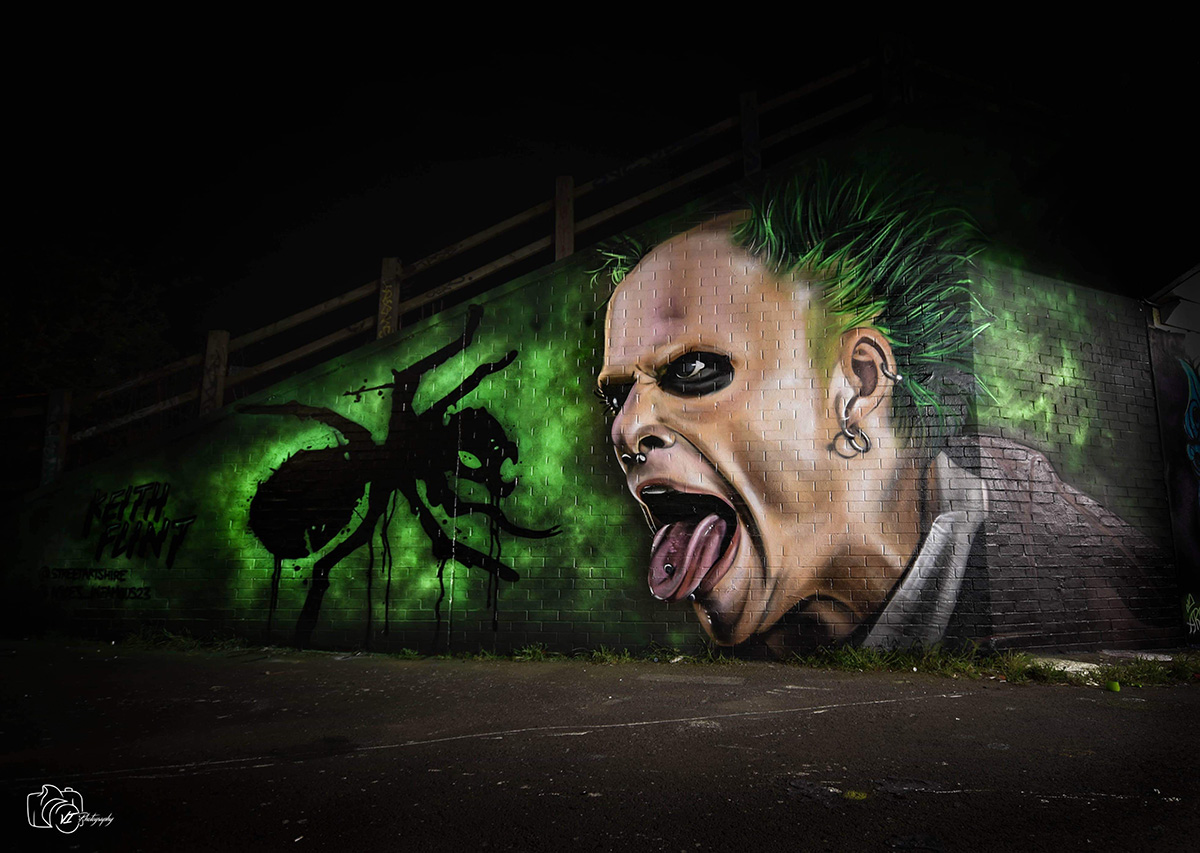
What was the first time you went viral?
I painted Keith Flint about 12 foot high over by IKEA and Amazon. It’s still there three years on, but I’m going to take it down in the next few weeks because it’s deteriorated really badly. That did 2.5 million views in 24 hours. I posted it on social media about six o’clock inthe evening, and by 10 o’clock the next day I had ITV and BBC on the phone!
When, something like that happens, does it change things for you, beyond the temporary craziness when it’s actually going viral?
I get asked this question a lot. And one of my customers said to me ‘Have you gone viral?’ I said ‘Yeah, twice…’ He said ‘Are you a millionaire?’ I said no. And he says to me ‘You’ve messed up there!’ But I don’t know. The way that this works is it’s like five minutes of fame – everything’s really, really intense for a few days and your phone just doesn’t stop. You can’t control it and it’s actually unbearable trying to keep up with the number of people trying to contact you. Then that sort of fizzles out and goes back to normal. But my profile as an artist is much wider. The odd person knows who I am. When you Google me now, the first thing that comes up about me is the Hindustan Times! I’ve also been in The Guardian. I’ve had a bit in Metro. I’ve been on Channel Four this year. So it is weird. I feel like I’ve managed to build a bit of a brand, and got an element of exposure around my name, but I’ve still got a bit of a way to go before it’s fully life-changing. It would be nice to be completely financially stable, but that’s not really what’s driving me. The best thing I’ve got from these experiences is connecting with people, and the conversations I’ve had with strangers that I’ve found really powerful and enjoyable – just being able to connect with people on an emotional or intellectual level. I’ve had some really wonderful messages from people saying how something I’ve done has made an impact on them. I don’t think money can buy that.
For me it’s like half a day painting a wall, but that might have made a real difference in someone else’s life. That’s why I love painting in the street. When I was painting Keith I met this gentleman who was nearly 70 and had recently lost his wife, and he’d never seen a street artist working before. We ended up having about an hour’s conversation. He was twice my age, we’d grown up in different times, but we had this conversation as two strangers that started with me painting a picture on a wall. It’s always a memorable moment for me when art can provoke a conversation and bring people together. Times like that are what’s special to me.
Is Street Arts Hire full time for you now?
I’ve been full time for five years. I left my last job in 2016. I was having one of those ‘let’s talk about your future’ conversations with my boss, and I really liked him so I thought ‘Right, I’m going to be honest…’ So, I told him I was thinking about leaving to do graffiti, and he was like ‘Are you mental???’ Then I had a meeting with the CEO who was like ‘You’re leaving here to write on garage walls..?’ But I’d made a half a year’s salary by just doing some street art on the side, so in theory I could actually work less and earn more by doing that…. Still, it was a risk. I was married with three children and a mortgage, but I just felt I had to do it. I had to know. So, off I went, and the rest is history. We’re now turning over in excess of 100 grand a year. Technically I’m the company’s only employee, but I subcontract to a whole team of artists, which means we can supply the right person for the job. Demand has grown way beyond my capabilities, and there are some jobs that I know someone else can do better than I can, because it’s not my speciality. That means we can also offer MCs, DJs, Beatboxers and elite level Break Dancers.
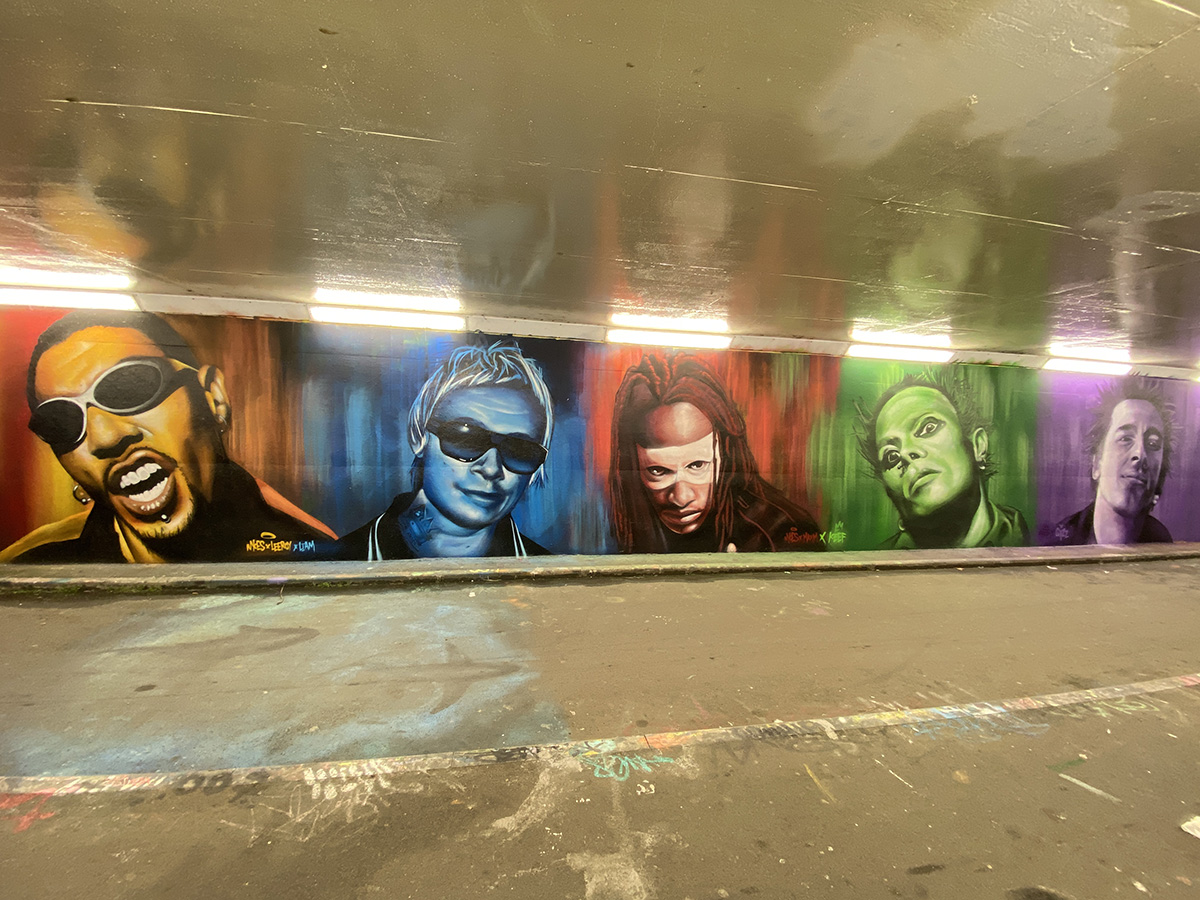
Do you get any bizarre requests?
Just before Christmas we painted a brand new interior to look like an old prison. The builders had been in there fitting new toilets and showers, and we were asked to go in there and make it look really disgusting – like it was 30 years old, and all grimy and rusty. This was for a place called Prison Island in Maidstone which is a big escape room complex. We’ve sort of got to a point where we’ve become masters in every surface.
You’re now a key part of Peterborough’s creative community, and have forged a living here. People are often negative about the city, but is that attitude changing?
When I was younger I disliked the city. I didn’t see it as a place of opportunities. I’ve benefitted from the city now and I don’t know if that’s changed my opinion or if I changed before that, but I’m certainly very Peterborough positive nowadays. I certainly feel it is going the right way. But there’s still a long way to go. I speak to a lot of young people who ask me about my journey and many of them are asking ‘Is there an opportunity in here?’ I think yes and no. It’s hard to stay if you’re pulled towards a larger city, particularly as a creative. But I think there’s definitely more opportunity than there was, and I think we’re on the right path. We’re bridging a lot of gaps, and particularly in the arts culture. I feel like there’s a growing collective of mixed arts, and there are exciting things that could happen in the city. I don’t think I’m ever going to leave the city. Now, I think the rest of my
life is here. And whenever my time comes to an end, when I start slowing down, I’d love to feel that we made some sort of impact. That it made a difference. I’d love to come in to the local colleges and speak to young people. I’ve seen some incredible artwork here, and I’d love to speak to them about what they think their path is, to support young people getting into creative careers and just helping people. I never felt like I had that kind of support.


